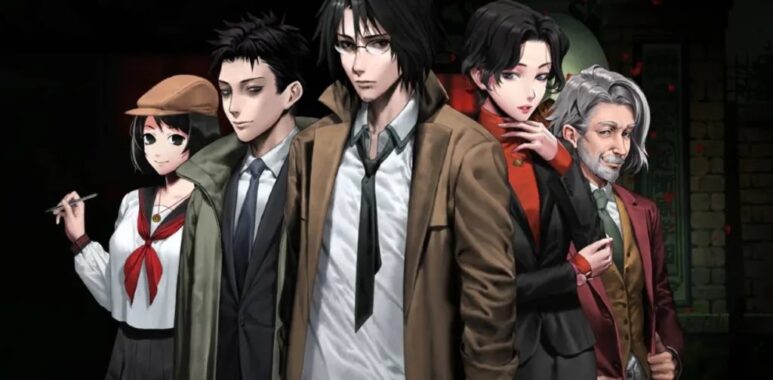
Spirit Hunter: Death Mark II Review – An excellent Horror Adventure mashup
A private institution called “Konoehara Academy,” founded over a century ago, is located in the outskirts of Tokyo’s H City. There were rumours that every ten years, the dead would enter the academy and spread a curse. Around the conclusion of the summer, some academy pupils perished inexplicably in the academy garden. While a police inquiry was unable to determine the cause of the occurrence, various rumours circulated among the students about their terrible deaths, including “it was the work of the dead” and “they were summoned by spirits.”
 In order to restore order inside the institution, the chairman ordered an inquiry from the Kujou house, which has been involved in rituals since ancient times. The leader of the Kujou house, a peculiar and moody middle-aged man who can “examine” the supernatural, launches an undercover inquiry as a temporary teacher to discover the truth behind the rumours. And to encounter the horrible curse of the dead that has seeped into the institution.
In order to restore order inside the institution, the chairman ordered an inquiry from the Kujou house, which has been involved in rituals since ancient times. The leader of the Kujou house, a peculiar and moody middle-aged man who can “examine” the supernatural, launches an undercover inquiry as a temporary teacher to discover the truth behind the rumours. And to encounter the horrible curse of the dead that has seeped into the institution.
 The Spirit Hunter series earned a reputation for itself in the adventure horror genre by incorporating Japanese legend into a contemporary environment. The tone was complemented by great sound design and a narrative that captivated everyone who played. While the series’ future seemed uncertain, the developer was able to build a sequel based on popular demand, resulting in Spirit Hunter: Death Mark II. While several gameplay elements have been changed, the basic concepts and great story direction make this a must-have title for genre enthusiasts.
The Spirit Hunter series earned a reputation for itself in the adventure horror genre by incorporating Japanese legend into a contemporary environment. The tone was complemented by great sound design and a narrative that captivated everyone who played. While the series’ future seemed uncertain, the developer was able to build a sequel based on popular demand, resulting in Spirit Hunter: Death Mark II. While several gameplay elements have been changed, the basic concepts and great story direction make this a must-have title for genre enthusiasts.
In Death Mark II, the headmaster of Konoehara Academy, located in a suburb of H City, Tokyo, summons Kazuo Yashiki, an experienced spirit detective. A number of strange deaths have occurred at the institution. Yashiki, who is well-versed in strange occurrences, investigates the school’s urban legends and dark history.
 Yashiki embarks on a mission to discover the reason behind the spirit’s rage, enlisting both old friends and new allies. His research takes him through Konoehara Academy’s ghostly halls and cursed bathrooms, where every turn reveals a clue to the spirit’s origins and goals.
Yashiki embarks on a mission to discover the reason behind the spirit’s rage, enlisting both old friends and new allies. His research takes him through Konoehara Academy’s ghostly halls and cursed bathrooms, where every turn reveals a clue to the spirit’s origins and goals.
Yashiki gets closer to solving the secret of the school’s dark past with each piece of the puzzle he collects. However, time is of the importance, with more lives hanging in the balance with each passing instant.
 Death Mark II follows a similar concept to the past two games, with several chapters, the majority of which offer a new ghost for us to hunt down and, hopefully, put to rest. However, it quickly becomes clear that all of these spirits are once again joined together by the influence of a far more powerful entity. In this case, it’s a horrible ghost known as The Departed, and for some reason, they’ve decided to target you as their ‘beloved spouse’.
Death Mark II follows a similar concept to the past two games, with several chapters, the majority of which offer a new ghost for us to hunt down and, hopefully, put to rest. However, it quickly becomes clear that all of these spirits are once again joined together by the influence of a far more powerful entity. In this case, it’s a horrible ghost known as The Departed, and for some reason, they’ve decided to target you as their ‘beloved spouse’.
Each soul you encounter has a distinct narrative to tell, which is sometimes linked with an urban legend. The game does an excellent job at emulating the sense of schoolyard rumours, as components from the genuine spirit’s terrible destiny become distorted and their borders blend with pre-existing ghost stories, making it even more difficult for you to explore and uncover the truth behind each one.
Backtracking is rather problematic due to the side-scrolling mechanism. While there are quick access points, some areas of the school are big, and going into each classroom many times to examine the space gets tedious. This new exploring technique also inhibits actual immersion and intensity, as seen by the jump scares occurring between loading screens.
 Another notable departure from the original is the decreased difficulty in battle. Spirit Hunter: Death Mark has a reputation for being one of the most difficult horror visual novel games, owing partly to its fighting system. While some players refer to the obstacles given by spirits as fighting, the situation is more analogous to a Sphinx riddle. In the first game, players must acquire as much knowledge as possible to successfully answer the spirits’ inquiries. This necessitates a thorough and comprehensive investigation of the scenes.
Another notable departure from the original is the decreased difficulty in battle. Spirit Hunter: Death Mark has a reputation for being one of the most difficult horror visual novel games, owing partly to its fighting system. While some players refer to the obstacles given by spirits as fighting, the situation is more analogous to a Sphinx riddle. In the first game, players must acquire as much knowledge as possible to successfully answer the spirits’ inquiries. This necessitates a thorough and comprehensive investigation of the scenes.
Death Mark II also has RPG features such as collectibles and a levelling system. The school infirmary, like Kujou Mansion in the first game, serves as your centre of operations, allowing you to typically pick which ally will accompany you, each with their own set of bonuses. Daimon, for example, has excellent dexterity and can assist you in opening difficult doors, whereas Shou has exceptional strength and can assist you in moving large things. You may also level up your characters and buy unique things by gathering ‘eerie teeth’. Eerie teeth are eerie tiny ‘lost souls’ that you may find in a variety of locations, with a limited number buried in each chapter, and you can trade them in at the hospital for important artefacts that might improve your chances of survival when confronted with spirits.
 Overall, Spirit Hunter: Death Mark II is an intriguing and captivating horror story that adds to an already excellent series. It expands on many of the concepts, storylines, and gameplay mechanics introduced in the previous two games, while also introducing a number of new aspects to keep things interesting.
Overall, Spirit Hunter: Death Mark II is an intriguing and captivating horror story that adds to an already excellent series. It expands on many of the concepts, storylines, and gameplay mechanics introduced in the previous two games, while also introducing a number of new aspects to keep things interesting.

